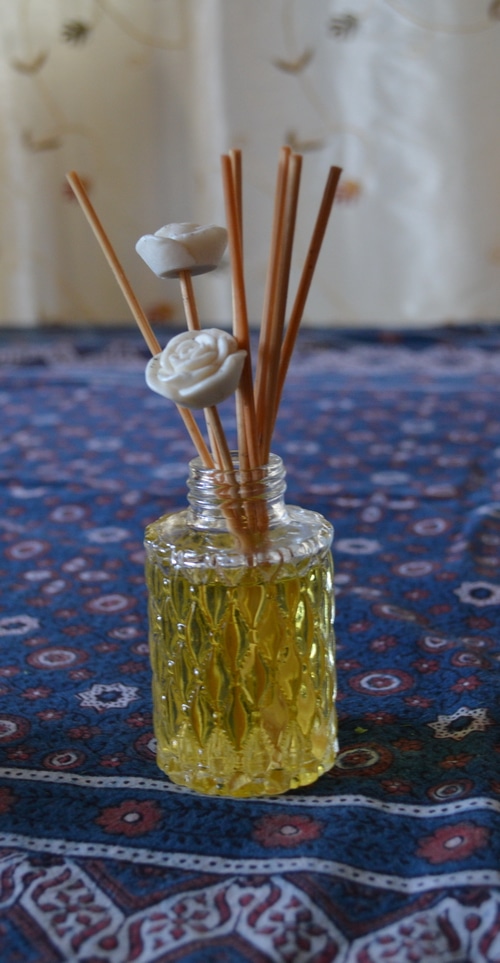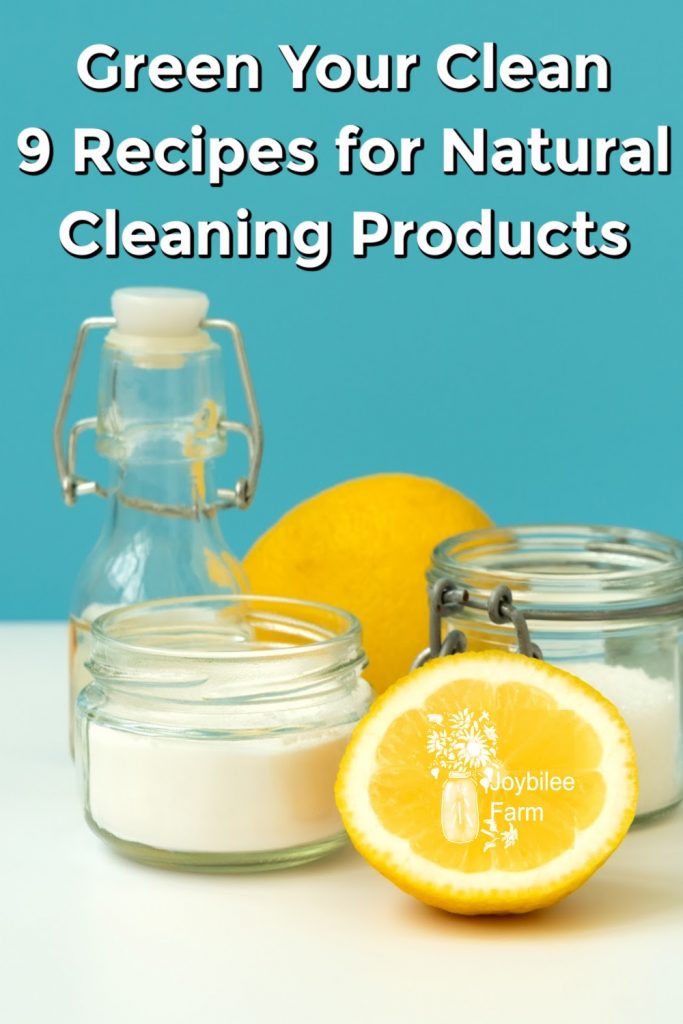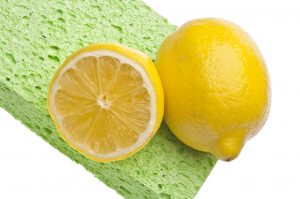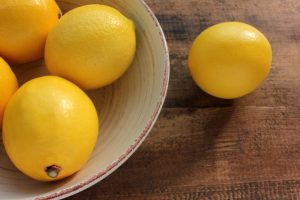Green Your Clean: 9 Recipes for Natural Cleaning Products
Get rid of the toxic chemical cleaners and use these 9 recipes for natural cleaning products to green your clean, instead. Easy and affordable.
Switch to Natural Cleaning Products to Green Your Clean
I visited a homeschooling friend who had 3 shelves in her laundry room full of chemical cleaning products — laundry detergents and additives, soap, tub and tile cleaners, disinfectants, bathroom cleaners, air fresheners — there were hundreds of dollars worth of cleaners weighing down her shelves and off-gassing toxins into her home. The smell of perfumes, formaldehyde and cleaning powders was overwhelming and her babies were crawling along the floor just under the chemicals. My friend was oblivious to the dangers that she was exposing her family to.
Household cleaning products are some of the most toxic polluters of indoor air, even when they are not in use. When they are in use, they injure those using them and then enter the water table when they are rinsed and flushed down the drain. There is no away — once they leave your home they continue compounding the environmental damage until they are broken down into their basic parts — which can also be toxic.
The solution is nontoxic options that you can create in your kitchen using things you probably already have on hand. Making your own natural cleaning products will save you money and protect the environment. Give them a try.
Your arsenal of ingredients:
Citric Acid crystals (sold in the spice section of a bulk food store – used for wine and cheese making)
White Vinegar
Non-sudsing Ammonia (I don’t use this very often)
Lemon Essential Oil (optional)
Lavender Essential Oil (optional)
Eucalyptus Essential Oil (optional)
Baking Soda (you can get big bags of this at the bulk food store)
Table salt
Washing Soda (found in the laundry section of your grocery store)
Borax (found next to the Washing Soda)
Hydrogen Peroxide (Found in the first aid section)
Rubbing alcohol (found next to the Hydrogen Peroxide)
Tapioca starch (found in the ethnic food section of your grocery store)
Bentonite Clay
Your rag bag with rags is cut into various sizes for cleaning and dusting. Wool rags work best for dusting and cotton rags for liquid cleaning. Make your own 100% cotton unpaper towels in two prints or colours — one for kitchen use and one for household cleaning.
9 Cleaning solutions:
1. Get the stains out of the toilet bowl:
Do you have hard water? Lucky you — the calcium, and magnesium in your water is healthy for drinking — not from the toilet though. But it will leave a brown-orange stain in your toilet bowls and sinks. To clean it add 2 tbsp of citric acid to the toilet before bed. In the morning brush it out with a toilet brush and flush. Clean the stain from your sinks with citric acid on a damp rag and a bit of scrubbing.
2. Window cleaning:
1/4 cup vinegar and 1/8 cup ammonia in a 1 litre spray bottle filled with water. Spray your windows and wipe with newspaper for a clean shine. No longer get the newspaper? Just use cotton rags.
3. Dust with Not-swifter cloths:
Those commercial microfibre cloths are impregnated with chemicals and leave your hands with a toxic chemical coating. Instead cut up an old t-shirt, blue jeans, or other cotton or wool cloth. You can also use a microfibre rag if you have a worn-out shirt of microfibre (they wear out faster than natural fibre clothing) If you are lucky and have an old wool jacket or felted wool sweater these work like a charm to attract the dust. You can even felt your own wool swifter cloths from 3 layers of wool felt, to match your felted wool dryer balls.
Or take your worn-beyond-mending wool socks and felt them in your washer then cut to size.
Cut your rag an inch wider than the original sheets to allow for the bulk of the fabric. Give it a spritz with Eucalyptus or Lavender EO mixed with water (I use 1/4 tsp. to one litre of water). Start dusting. This is especially useful in a log house, as the mop has a swivel head that conforms to the angle of the log surfaces. Simply replace the cloth as it becomes soiled and toss it in the washing machine with your regular wash. Then reuse. Wool cloths should be air-dried.
4. All Purpose Cleaner:
1/4 cup white vinegar
1/4 cup ammonia
1/4 cup hydrogen peroxide
3 cups cold water
1/4 tsp. lemon oil or eucalyptus oil or a combination
Combine in a spray bottle. Spritz and wipe.
5. Cleaner for tough grime:
Baking soda, citric acid, salt and grated soap in equal portions to make a scrubbing cleaner. Rub into tough grime with a damp rag. Rinse with clean water. Repeat as necessary. Works well for removing grease stains.
6. To remove grease stains from carpets:
Put equal parts of Baking soda and tapioca starch in a jar with a lid with several small holes — these jars are sold for garlic salt and Parmesan cheese in the kitchen stores. Sprinkle the cleaning mixture on the carpet. Sweep it into the stain. Vacuum. The starch lifts the grease and the baking soda removes odours.
7. To disinfect your kitchen, nursery or bathroom
More effective than bleach and anti-bacterial solutions. You will need two spray bottles — one with white vinegar and one with hydrogen peroxide. Wash the counter or other area to be disinfected, using the all-purpose cleaner or just soap and water. Spray with white vinegar, wipe. Spray with Hydrogen Peroxide. Wipe dry. You’re done. Two sprays are more effective than mixing the two solutions in a single spray bottle.
8. For cleaning floors
This is trickier as there are many different kinds of floors from wooden to vinyl, to linoleum. Regular sweeping and mopping with plain water works in most cases. You can add some vinegar and soap flakes to hot water to get the tough grime off — like in your kitchen during canning season. Make sure you rinse any cleaning products with clean water. Soap film will attract dirt.
For daily tidying, after you sweep and before you take your dishcloth and toss it in the wash, take it along the floor at the edge of your counters to remove the grime. You won’t have to wash your floor as often if you use this trick.

9. Air Fresheners:
A clean house is a fresh house. Keep a box of wooden matches in the bathroom for those bad smells. Strike a match and light a beeswax candle for a brief moment to clean the air. Snuff it out before you leave the room, to avoid fires.
In your home burning beeswax candles removes odours from the air and increases negative ions to leave you feeling energized. Add a drop of essential oil to the melted wax to increase the sense of well-being in your home. Good choices are lavender, lemon, orange oil, bergamot, lemon verbena. Never burn soy or paraffin candles in your home. Soy wax is a chemicalized wax derived from GM soy oil and will release endocrine disruptors into your home. Paraffin is a petroleum product that off-gasses carcinogens. Beeswax is the safest candle wax to use. Source your beeswax locally and talk to the beekeeper. Most beekeepers are careful not to harm their bees when harvesting honey and wax.
Or make this essential oil reed diffuser to bring the healthful scents of organic essential oils to your rooms.
Other recipes for natural cleaning products to help you green your clean:
Green your Clean, part 2 — Getting tough in the Bathroom
Add Natural Citrus Cleaner to your natural cleaning products.
Make your own laundry detergent.
Your turn:
What tricks do you use to keep your home fresh and clean without toxic chemicals? Share your tips with my readers in the comments section.
For more natural cleaning products and recipes subscribe to the Joybilee Farm Newsletter. Use the subscription box below. It’s free.
Here are some more resources with more natural cleaning products and recipes:
The Naturally Clean Home: 150 Super-Easy Herbal Formulas for Green Cleaning
Easy Green Living: The Ultimate Guide to Simple, Eco-Friendly Choices for You and Your Home
Green Up Your Cleanup (The Green House)






Hi, Andrea
Thanks for stopping by and leaving a comment. I signed up on your Facebook page, too. What you’re doing at Frugally Sustainable is in line with my homesteading blog, too. Lovely to meet a like-minded blogger.
Chris
Thank you so very much for linking up to Frugal Days, Sustainable Ways:) I’m so happy to “meet” you! I am totally loving your blog and your posts! I really hope you make Frugal Days, Sustainable Ways a part of your Wednesdays! And keep the great posts comin’
Very sincerely,
Andrea @ Frugally Sustainable